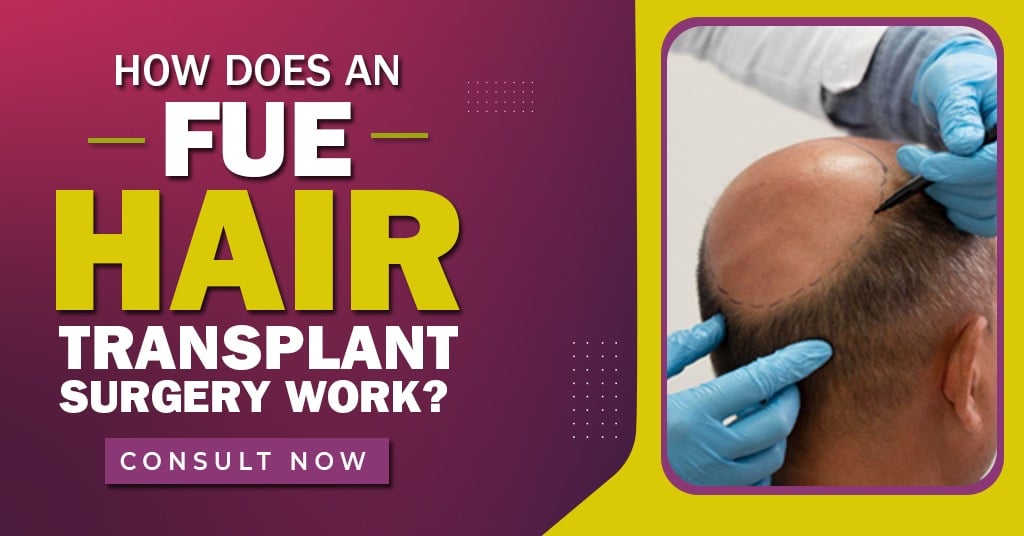A hair transplant is a process in which hair is transplanted from one region (donor area) to a bald or sparsely-haired area (recipient area) on the scalp. Grafting is the most common method used for hair transplants. A hair transplant, also known as hair restoration or hair replacement, is typically performed on persons who have tried previous hair loss therapies. To be eligible for a Hair Transplantation Method, one must have thick donor hair. Persistent hair loss can occur as a result of various types of alopecia. Dermatologists or plastic surgeons do hair transplants.
Grafts, or small pieces of skin, are taken from places of the body with good hair by the transplant surgeon. The donor site is where the hair is taken from, and it is normally on your head, at the rear of your scalp, where the hair is thickest. Hair should grow back after the grafted skin heals.
Who can go for a hair transplant surgery?
Some people lose their hair temporarily, but it might be permanent. A hair transplant surgery is suitable for those people who have:
- alopecia areata, an autoimmune illness in which the body’s immune system assaults hair follicles, is treated through hair transplants.
- alopecia androgenic (male or female pattern baldness).
- hair loss is caused by thyroid disorders or hormonal imbalances.
- burns or traumatic injuries.
To have a successful surgery, one must be in good health and have realistic expectations regarding the results of hair replacement. On your scalp, the hair transplant candidate should still have patches of robust hair growth. There are mainly 2 types of hair transplant surgery, one FUE & the other one FUT. In this blog, we are going to discuss how FUE hair transplant Work.
How does FUE hair transplant surgery work and What are the Steps Involved?
Step 1: consultation and preparation
Patients sit down for a one-on-one meeting with the surgeon at the start of a hair transplantation surgery. It is critical to evaluate each case carefully and establish the appropriate amount of grafts to be transplanted, as well as their placement. Here is the moment to talk about the forecasted results and ask questions. We then proceed with the pre-op testing and other preparations that are required.
Step 2: donor graft extraction
At this stage, the surgeon extracts donor grafts from the patient’s donor area using a specialized tool. Typically, donor grafts are removed from the back and sides of the scalp, however, alternate donor sites are used in some circumstances. With the advanced hair transplant method, the FUE procedure, one graft is extracted at a time. This kind of extraction barely leaves any kind of scar on the donor location.
Step 3: graft preservation
Our team actively preserves grafts for implantation as they are retrieved. To enhance the survivability of the grafts, grafts are cleansed, sorted by the number of hairs they contain, then submerged in an active plasma solution after being removed from the donor site. The grafts are then placed in Petri dishes and refrigerated until implantation.
Step 4: implantation
Once enough grafts have been retrieved, the surgeon will begin implanting them. Individual grafts are loaded into the implanter devices one at a time by a team of nurses and passed to the surgeon. This kind of implantation allows us to implant grafts between existing hair, resulting in extremely dense implantation. The implanter pen approach gives our head surgeon complete control over the angle of implantation.
Step 5: post-op care
Following the completion of the major stages of a hair transplant, it is important to follow proper aftercare procedures. This includes cleaning the donor and implantation sites, as well as shielding the transplanted grafts from the weather, excessive rubbing, impacts, and direct sunlight. The surgeon will also schedule a follow-up appointment a day following the hair transplant to assess recovery progress.
Side-effects of hair transplant surgery
On your scalp, at the donor site, or at the receiver site, the patient may face the following problems:
- Scabs or crust.
- Itching.
- Sensitivity loss.
- Tingling or pain.
- Swelling.
- Tightness.
- Bleeding

